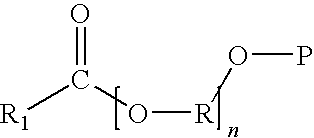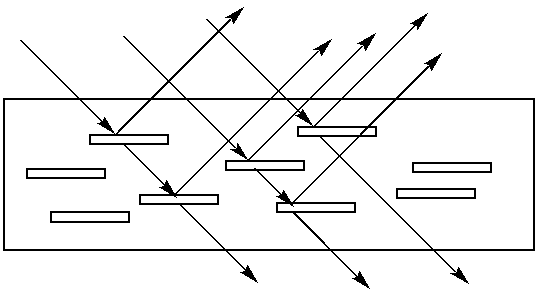Liquid treatment composition
a liquid treatment and composition technology, applied in the direction of detergent dyes, detergent compounding agents, inorganic non-surface active detergent compositions, etc., can solve the problems of unsatisfactory, unappealing, and likely deposition of pearlescent agents on the surface being treated, and achieve the effect of reducing the number of deposits and reducing the number of occurrences
- Summary
- Abstract
- Description
- Claims
- Application Information
AI Technical Summary
Benefits of technology
Problems solved by technology
Method used
Image
Examples
examples
[0167]The following nonlimiting examples are illustrative of the present invention. Percentages are by weight unless otherwise specified.
examples 1-5
Illustrates the Preparation of Cold Pearl Premixes of Organic Pearlescent Agents
example 1
[0168]To prepare a cold pearl premix, 900 grams SLS1 is added to a jacketed vessel with an internal diameter of 120 mm and a total capacity of approximately 1200 ml. The vessel is equipped with dual four blade impellers at a length of 38 mm each and having a pitch of 45°. SLS is heated to 77° C. at which point 100 grams glycol ester-A3 (EGDS:EGMS 75:25) is added. The pre-mix is held at 77° C. for approximately 2 hours at a mixing speed of 300 RPMs. The mixture is heated to 87° C. and held for 30 minutes while maintaining 300 RPM. It is then cooled at a rate of 4° C. / min until the pre-mix reached 22° C. while maintaining 300 RPM. Once pre-mix has reached the desired temperature, mixing is stopped.
PUM
| Property | Measurement | Unit |
|---|---|---|
| particle size | aaaaa | aaaaa |
| viscosity | aaaaa | aaaaa |
| temperature | aaaaa | aaaaa |
Abstract
Description
Claims
Application Information
 Login to View More
Login to View More - R&D
- Intellectual Property
- Life Sciences
- Materials
- Tech Scout
- Unparalleled Data Quality
- Higher Quality Content
- 60% Fewer Hallucinations
Browse by: Latest US Patents, China's latest patents, Technical Efficacy Thesaurus, Application Domain, Technology Topic, Popular Technical Reports.
© 2025 PatSnap. All rights reserved.Legal|Privacy policy|Modern Slavery Act Transparency Statement|Sitemap|About US| Contact US: help@patsnap.com



